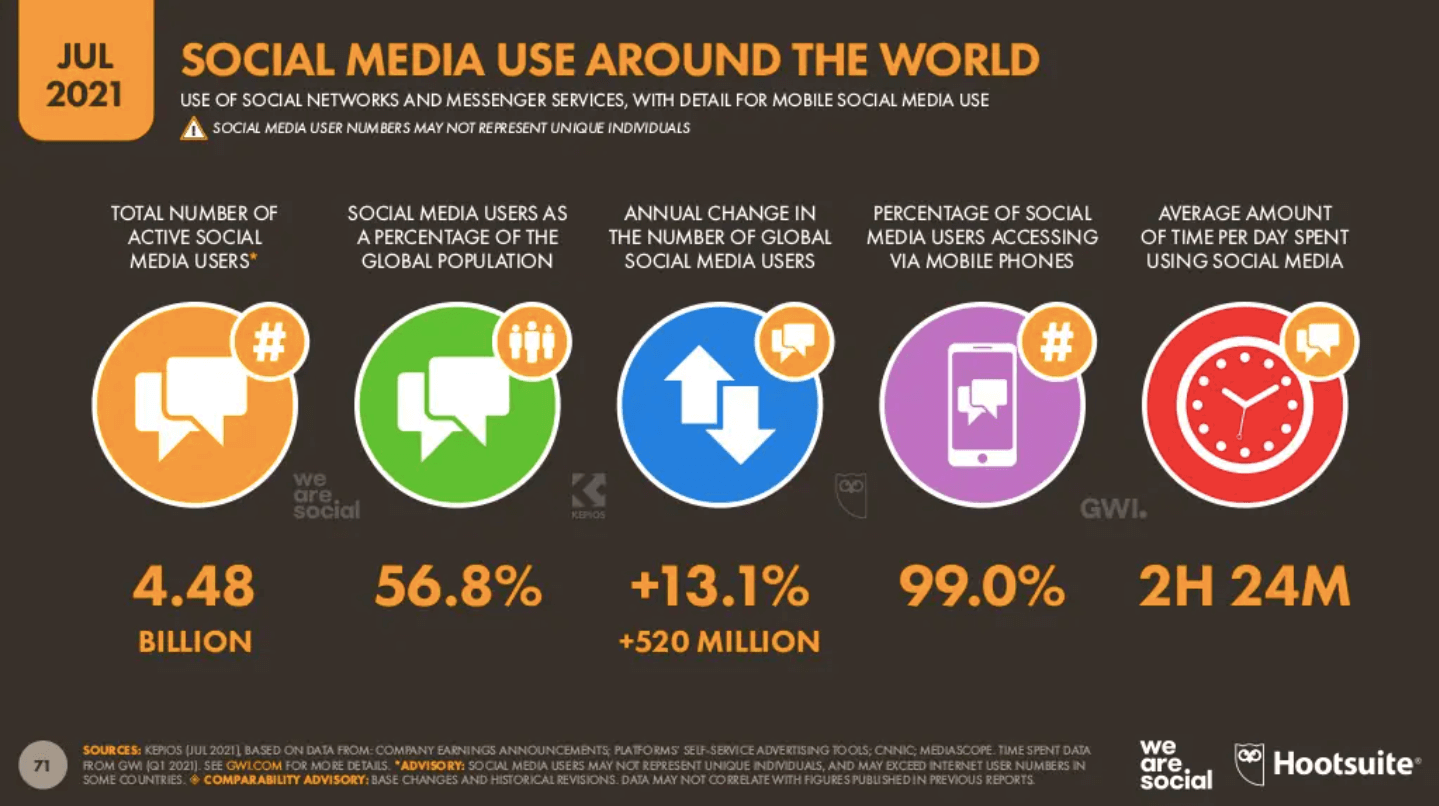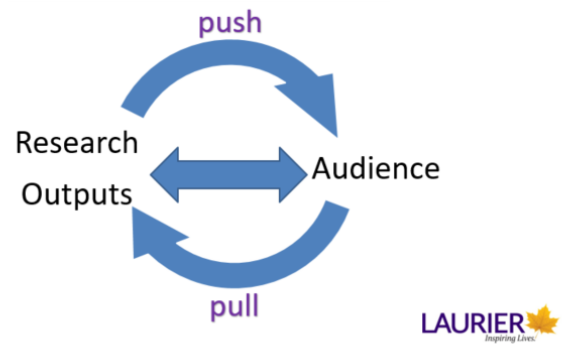85 Social Media | Understanding Social Media
Social media tools are “computer-based tools that facilitate the sharing of ideas, thoughts, and information through the building of virtual networks and communities”.46 Due to the networked and interactive nature of social media tools, a specific strategy is required to leverage social media effectively within a larger communications strategy.
 Deeper Dive
Deeper DiveWikipedia provides an extensive definition of types of social media and their evolution and history.
Social media tools are quickly becoming part of a standard communications tactics. According to Smart Insight, as of July 2021, 53.6% of the world’s population uses social media, including social media and messenger services. 47

A social media strategy is complementary to a communications plan. Both plans incorporate different types of knowledge mobilization products to share research outputs with targeted audiences. Communication plans, knowledge mobilization plans, and social media plans are all concerned with effectively engaging audiences with research outputs and researcher expertise.
Communication plans outline specific tactics to “push” content to audiences, or create ways for audiences to “pull” content from a trusted source. Social media plans also engage in “push” and/or “pull” tactics, with the primary goal of sharing and exchanging content within networks of users.
The overarching aim of a social media plan is to provide content into a specific social media network. Once your content is shared in the network and is discovered by other users, other social media users within a network share your content amongst themselves organically. This organic sharing of your content, based on the attributes of the content and your position as a trusted user within the network, expands the reach and impact of research via social media.


